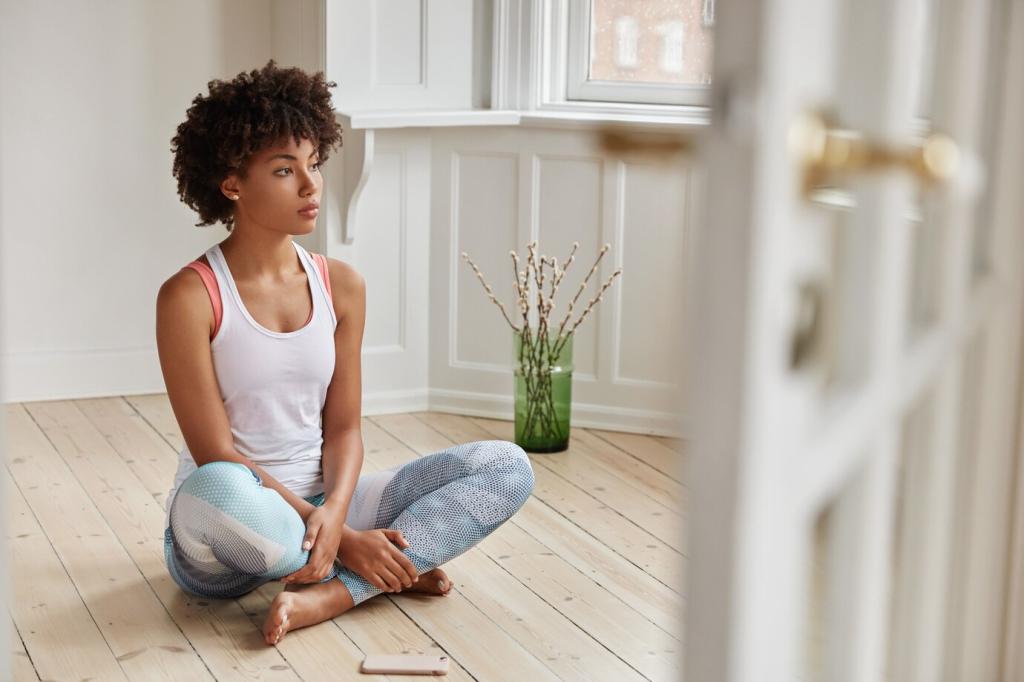Meditation Techniques for Anxiety Relief: Breathe, Ground, and Gently Reset
Chosen theme: Meditation Techniques for Anxiety Relief. Welcome to a calm corner of the internet where we practice small, steady techniques that lower stress, soothe a racing mind, and build everyday resilience. Stay with us, try a practice, and subscribe for weekly guidance.
Diaphragmatic Breathing for Steady Grounding
Place a hand on your belly and inhale slowly through your nose, letting your abdomen rise. Exhale longer than you inhale. This gentle change nudges your nervous system toward rest and reduces anxious agitation.
Box Breathing: 4-4-4-4 for Focus
Inhale for four, hold for four, exhale for four, hold for four. The even rhythm steadies attention, helping you meet rising anxiety with structure, clarity, and a calmer internal pace.
4-7-8 Wind-Down for Evening Ease
Inhale four, hold seven, exhale eight. The long exhale cues release and drowsiness. Practice five rounds before bed to quiet rumination and invite a kinder, slower nighttime mind.
Close your eyes, sweep attention from forehead to toes, and notice neutral spots first. Naming comfort makes the nervous system feel safer, which makes releasing tight shoulders or clenched jaws far easier.
Mindfulness in the Body: Scan, Label, Release
Quietly label sensations and feelings: fluttering, heat, tightness, worry, urgency. Simple words reduce uncertainty. With less mystery, the body relaxes, and your anxious mind loses momentum and drama.
Mindfulness in the Body: Scan, Label, Release
Compassion Practice: Loving-Kindness When Worry Spirals
Begin with Yourself, Kindly
Silently repeat: May I feel safe. May I be peaceful. May I meet this moment with courage. These phrases aren’t magic spells—they are steady reminders that reduce threat and welcome calm.
Widen the Circle, Ease the Heart
Extend the same wishes to a friend, then a neutral person, then someone difficult. Anxiety shrinks when connection grows. This practice rebalances attention away from fear and toward shared humanity.
When Resistance Appears
If kindness feels awkward, notice that too. Say, Resistance is here; I can hold it gently. Curiosity softens the edge, turning discomfort into a doorway back to steadiness and choice.


Grounding and Visualization for Safety
Name five things you see, four you feel, three you hear, two you smell, one you taste. Anchoring senses interrupts anxious loops and reconnects you with the reliable present moment.
Grounding and Visualization for Safety
Imagine a setting that feels peaceful—details, colors, textures, sounds. Visit it for sixty seconds during spikes. The brain responds to imagined safety, easing heart rate and inviting softer breathing.

Movement Meditation to Discharge Restless Energy
Walk a slow lap and synchronize breath with footfalls. Count steps on the inhale, then the exhale. This moving anchor absorbs jittery energy while keeping attention kind, steady, and present.
Build a Gentle Daily Practice That Sticks
Attach a two-minute meditation to an existing habit, like morning coffee. Consistency beats intensity. Celebrate each repetition to teach your brain that calm is achievable and worth returning to.
Build a Gentle Daily Practice That Sticks
Choose a small space with soft light and minimal clutter. Keep a timer, cushion, and blanket ready. Visual cues reduce friction and invite practice, especially on anxious, low-motivation days.
